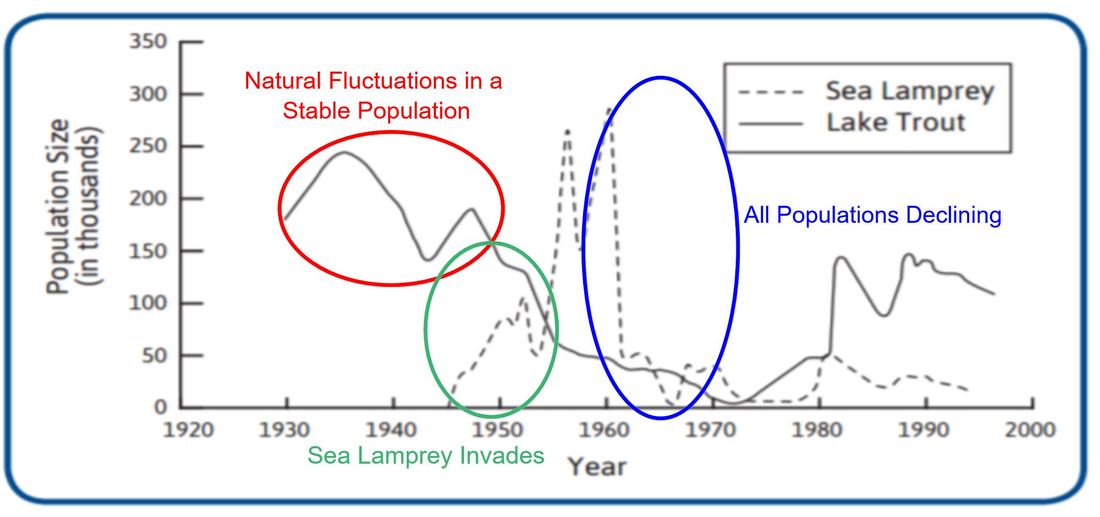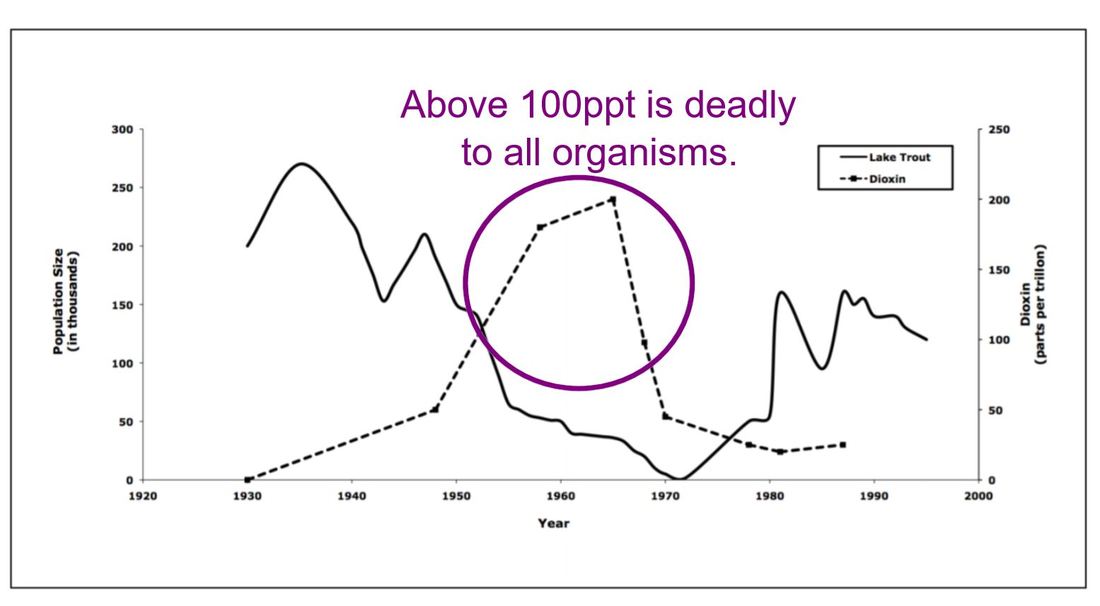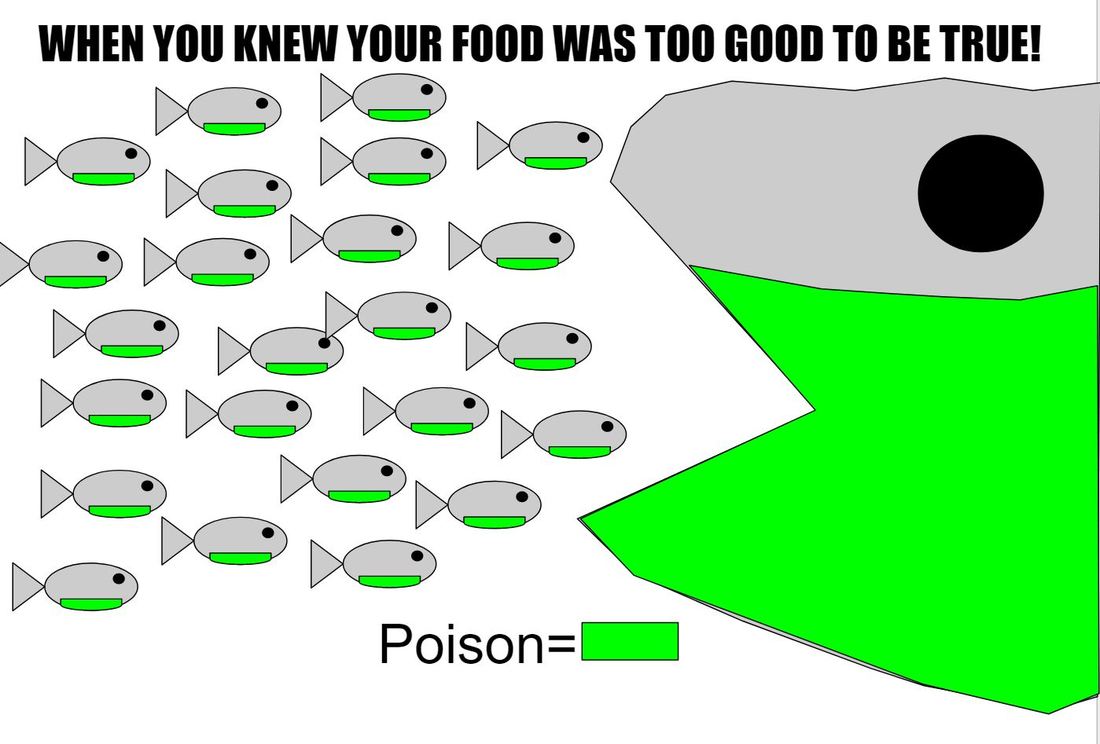Something's a little fishy here...
We are pretty much in agreement that the sea lamprey's invasion into the Great Lakes explains the decline in the trout population starting in 1945, but what we aren't so sure about what the rapid decline of the sea lamprey in 1960. What's causing this decline? Is it a biotic factor like food supply? Or can it be abiotic, like pollution?
We learned a bit about a chemical called dioxin and its effects on a food we through bioaccumulation. Here is some data Mrs. Brinza got her hands on...
We are pretty much in agreement that the sea lamprey's invasion into the Great Lakes explains the decline in the trout population starting in 1945, but what we aren't so sure about what the rapid decline of the sea lamprey in 1960. What's causing this decline? Is it a biotic factor like food supply? Or can it be abiotic, like pollution?
We learned a bit about a chemical called dioxin and its effects on a food we through bioaccumulation. Here is some data Mrs. Brinza got her hands on...
We started to put two and two together that the dioxin had an impact fairly deep. Our understanding of bioaccumulation would also help explain why the sea lamprey, who as an invasive without any predators, would end up with the most dioxin in its body, and therefore, see the greatest dip in its population.
As this student's meme points out...
As this student's meme points out...
All this makes us wonder though...what happened to keep the sea lamprey population so low and the trout population rebound in the 1980s? Was this when lampricide was introduced and a limit to the production of dioxin as a waste product?
Check out this website which gives great information on the usage of lampricides!
Check out this website which gives great information on the usage of lampricides!



 RSS Feed
RSS Feed